"Something there is more immortal even than the stars,
(Many the burials, many the days and nights, passing away,)
Something that shall endure longer even than lustrous Jupiter,
Longer than sun or any revolving satellite,
Or the radiant sisters the Pleiades." -Walt Whitman
Last week, we kicked off our very first Messier Monday by spotlighting M1: the Crab Nebula. But with 110 different objects to choose from, the Messier catalogue represents some of the brightest and most universally accessible wonders of the night sky.
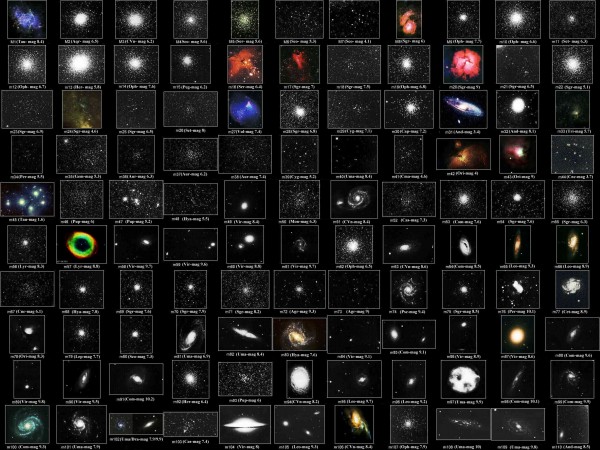
Image(s) credit: SEDS -- http://messier.seds.org/.
Many of these objects are more easily visible at different times of the year; as we begin to approach the December Solstice, the ancient constellations Orion and Taurus become more and more prominent in the night sky.
The constellation of Orion and the nearby bright orange star, Aldebaran, are perhaps the easiest objects to identify (other than the Big Dipper) in the skies at this time of year, and are able to guide you to the Crab Nebula in the constellation of Taurus. But, believe it or not, that constellation contains only two Messier objects! The other one is the famous -- and oft-visible to the naked eye -- collection of stars sometimes known as the Seven Sisters: the Pleiades.
The Pleiades -- or Messier 45 -- are most easily found by drawing an imaginary line from Orion's belt, past Aldebaran, and on to a fuzzy, cloudy collection of blue stars clumped very closely together.
To someone with very good vision and even reasonably good suburban seeing conditions, seven individual stars are clearly identifiable. Through even binoculars, it's clear that there's something impressive that goes beyond what our eyes can see.
The stars are clearly very blue, and there are clearly more than seven of them. But just how many more are there? To someone with a powerhouse piece of equipment, it becomes clear immediately that there's a treasure trove of beautiful, bright blue stars shrouded in dust just beyond the reach of our vision.
There are over 1,000 confirmed stars in this young cluster of stars; under ideal conditions up to 14 of them can be seen with the naked eye. The hottest, brightest stars in there are B-class stars, which tell us that this cluster, although young, has actually been around for quite some time: at least 80 million years. The highest mass stars burn through their fuel the most quickly, and die in catastrophic supernovae explosions, leaving behind black holes and/or neutron stars.
There are plenty of O-class stars (the brightest type) in the night sky, and star clusters like the Pleiades -- open star clusters -- are the places where they're most commonly found. But we don't find them in the Pleiades! The lack of ultra-high-mass O-stars, and even a lack of the very brightest B-class stars, tells us that star formation ceased no later than 80 million years ago. (The brightest B-stars are type B0; the dimmest are B9. The only B-stars left in the Pleiades are B6 and dimmer.)
But what we find, instead of O-and-bright-B-stars, is something quite remarkable, once we're willing to look with X-ray eyes!
A huge number of X-ray point sources -- which typically identify black holes and/or neutron stars -- are a smoking gun of stars that have gone supernovae since the formation of the cluster, and have left behind degenerate stellar cores! The green boxes indicate the seven brightest optical stars, and as you can see, they don't have very much in common with the X-ray sources. (The ones that do may, in fact, be in binary systems!)
But you'll also notice -- far more prominently -- a slew of big, bright X-ray sources, many of which are hot (false-colored blue), and indicative of intense X-ray-emitting sources.
Know what powers an X-ray-emitting source?
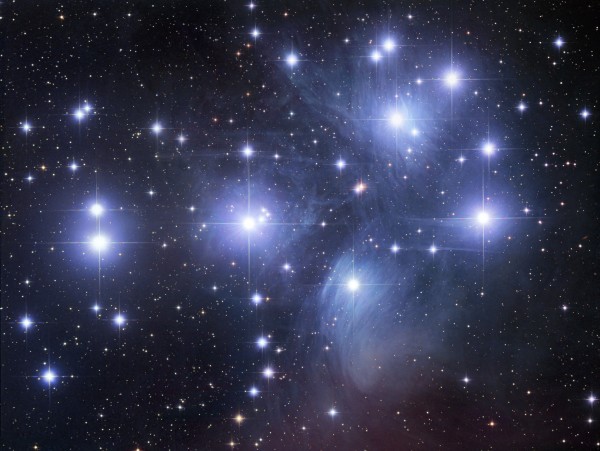
Image credit: Robert Gendler of http://www.robgendlerastropics.com/.
Dust! Specifically, dust, gas, and other matter that gets accelerated by a degenerate objects like a black hole or neutron star. Magnetic fields in these locations are some 1015 times stronger than the magnetic field at the surface of the Earth, and when they get fed, they accelerate that matter and spit it out. But charged particles moving in a magnetic field emit radiation; in these cases, the radiation is so energetic that we see it as X-rays!
And while the dust itself is quite prominent in the visible part of the spectrum, the way to really get a window on it is to look in the infrared, where neutral, warm gas and dust dominates.
The Spitzer Space Telescope shows us, quite clearly, that there's no shortage at all of this gas and dust in the neighborhood of the Pleiades.
Over time, the remaining B-type stars will burn out, and since they're not quite massive enough to create supernovae, they'll form planetary nebulae and white dwarfs when they do. The dust will continue to evaporate and will eventually be either ionized or blown into interstellar space, as this evaporating dust cloud near Merope -- courtesy of the Hubble Space Telescope -- is doing.
Eventually, this great cluster of stars will -- over hundreds of millions of years -- be torn apart into individual stars and much smaller groups by gravity.
But for right now, we've got an amazing collection of over 1,000 stars just 500 light years away from us, helping light our night sky with a spectacular display.
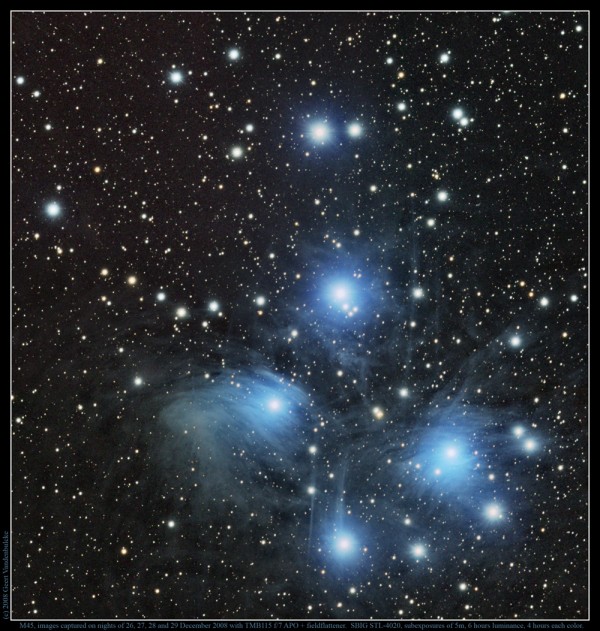
Image credit: Geert Vandenbulcke of http://www.astronomie.be/.
That's one of the nearest open clusters to us and one of the most famous non-comets in the night sky: the Pleiades!

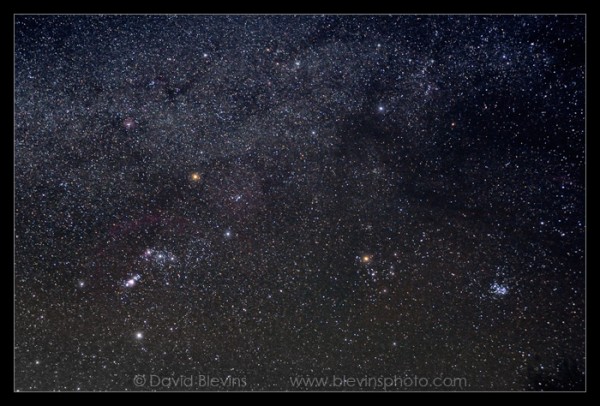
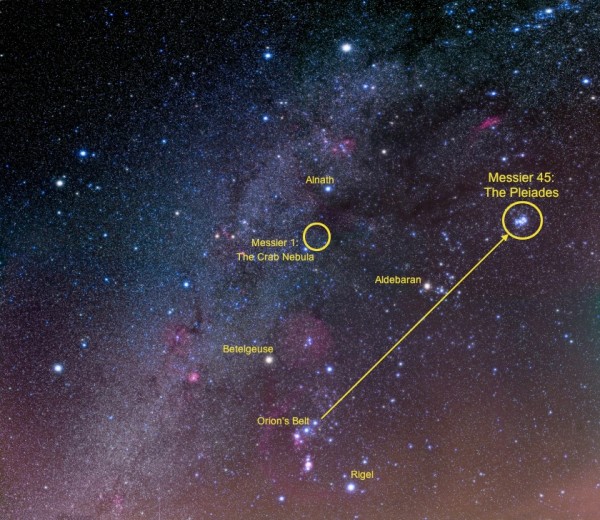
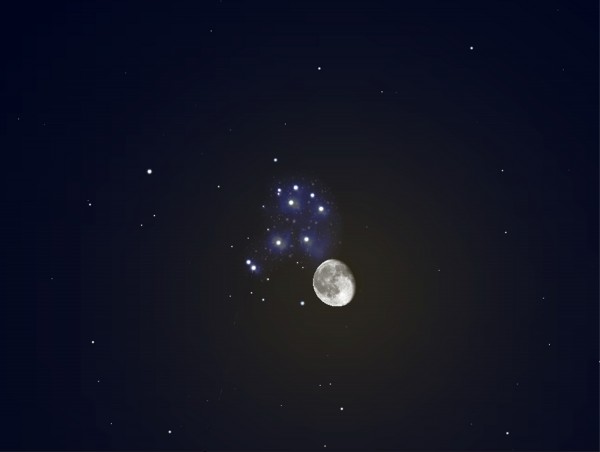
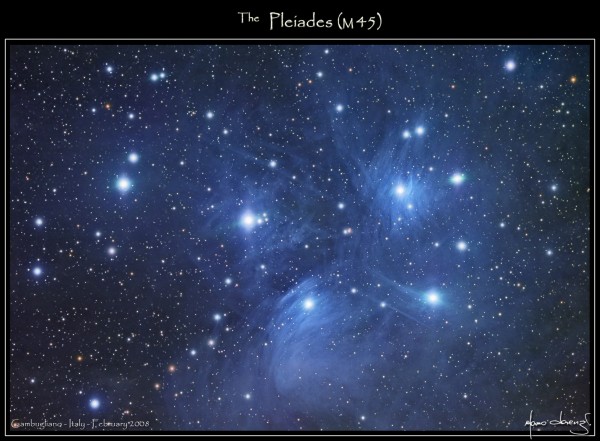

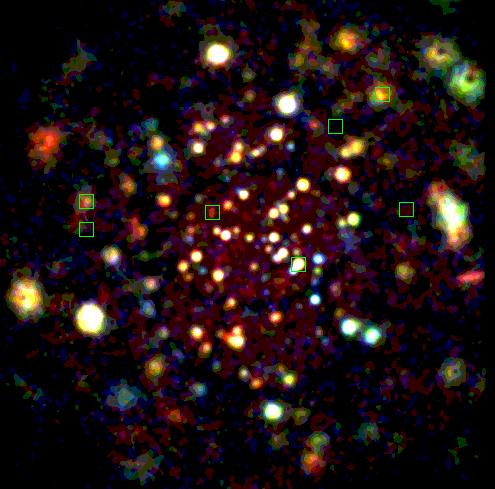
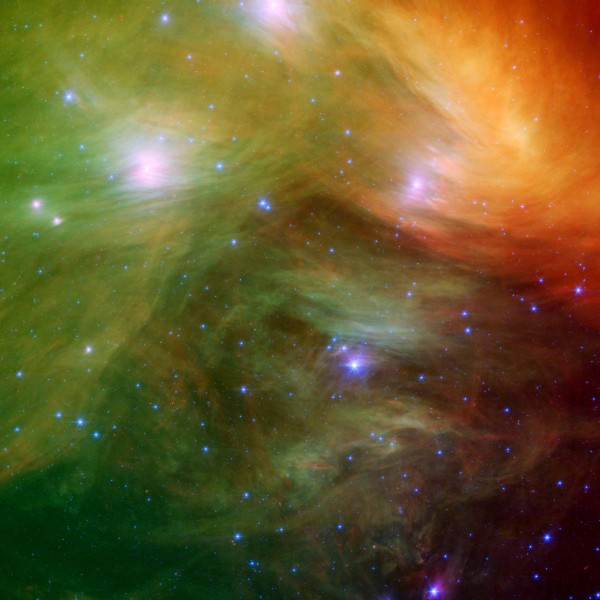
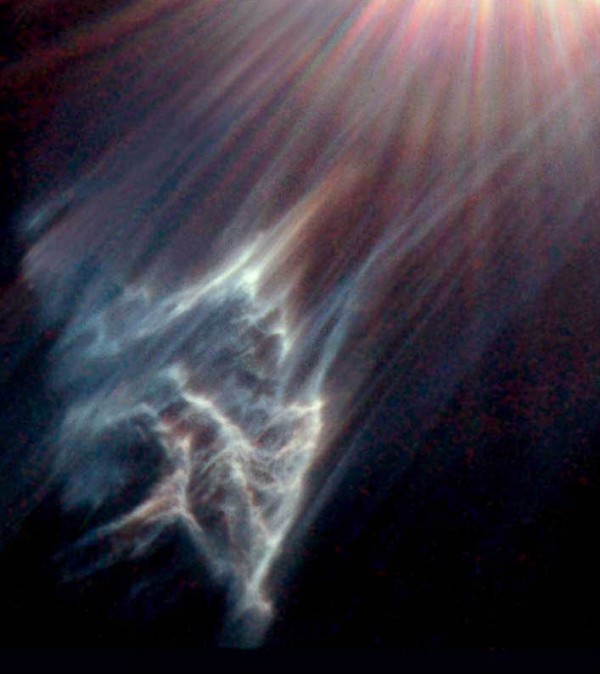
The Pleiades are also known as the name of a Japanese car manufacturer. Yes indeed, Subaru. The significance of the name relates the the seven or so companies that form Subaru.
Great article again Ethan. Thanks. But the image of Pleiades and Moon is from Stellarium or something similar. No way is that an actual photo, one clearly sees pixelation on the moon, it's a bitmap sprite, the exposure of the background is wrong also. If I were to bet my money, I would say Stellarium.
SL, digital cameras make an image composed of pixels.
SL, digital cameras make an image composed of pixels.
I believe you mean "the image edge of the moon is made up of coarser pixels than the image itself", though this could be a result of composite picture, which would HAVE to be done to get the moon and the dust cloud the Pleiades are going through illuminated visibly together.
The biggest idea for it being a simulation is the lack of stars in the field whilst exposing enough to show the aforementioned dust.
@Tony P:
Actually it was six companies that formed Fuji Heavy Industries (former name of Subaru):
http://www.subaru-global.com/origin_name.html
Note the Subaru logo has six stars.
It seems to me in any case that there are six most easily visible stars in M45, and if you can see seven, you can probably see more than seven.
Nick
Siniza & Wow,
I was suspicious of the image, too. Here is the site where I retrieved it from: http://www.derekscope.co.uk/2010/02/the-moon-and-pleiades-seven-sisters/
Although it asserts that this is an actual image, I know of no filter that would successfully reduce the brightness of the Moon that much while exposing the Pleiades that well. At the very least, it's a composite, and at the most, it's entirely simulated.
Another treasure, Ethan. Thanx.
Did some checking on net.. :) It's a fake, and even a wrong fake at that :))))
Here is the original
http://www.jodrellbank.manchester.ac.uk/astronomy/nightsky/nskyoct09.ht…
the image is from Stellarium, and it's for 7th of October 2009! :))
Guess Derekscope doesn't know the difference between astrophoto and stellarium :) It was made by manchester guys, but only with "printscreen" :)))
Thanks, Sinisa.
Looks like I'll be thinking twice before I take images (and captions) from Derekscope again. Also, well-done on the intuition that it was generated with Stellarium!
It's a risk when using google search for images.
Good sleuthing, Sinisa. I got only as far as confirming that there actually was a lunar-Pleiades conjunction on Oct. 7, 2009, just as Derekscope saide. The difference in pixillation of moon and stars was pretty solid evidence of a mashup, but I couldn't find definitive proof. Well played, sir.
Thanx guys :) Pleasure to be able to contribute at least a little. I learned so many new things here, if I can give anything back, that's great :)
See, I looked at that image and just assumed the moon was placed in the image for scale.
Hi everyone,
I have a question that is completely unrelated to this post. I was reading an article today about the oldest supernova ever detected, almost 12 billion light years away. Here's my question...I am having trouble understanding how the light from a supernova that occurred only 1.5 billion years after the Big Bang is just reaching us now. If this supernova happened only 1.5 billion years after the Big Bang, when both our sun and the earth hadn't been formed yet, how is it that we are still able to detect it? It seems to me that this light should have dissipated long ago. Along the same lines, I don't understand how we are able to see the first galaxies ever created. Again, shouldn't this light have passed us by billions of years ago? I would much appreciate someone enlightening me in my ignorance.
If it took someone to send the message of your birth to another person 30 years, and that person hadn't been born yet, the message can still get to them 30 years later when they are.
Nice article again, Ethan, thank you so much.
Has anyone pondered on the effect (if any) all the supernovae explosions you mention after showing us the X-ray image, occurring that close to us (500 ly), may have had on the life on Earth?
This was one of the first astronomical objects I viewed through my dob, it was also the first moment that I experienced such a profound sense of scale in regards to space. I'll never forget that moment; it changed my life.
When we see light from stars (including our Sun), we are seeing these stars as they looked like in the past; that is to say, light from a supernova 12 billion ly distant, took 12 billion years to reach us! Incidently, most cosmologists believe that, shortly after the big bang, space expanded very rapidly - much faster than the speed of light during a period called "inflation", which makes most of the Universe unobserveable, given the finite speed of light.